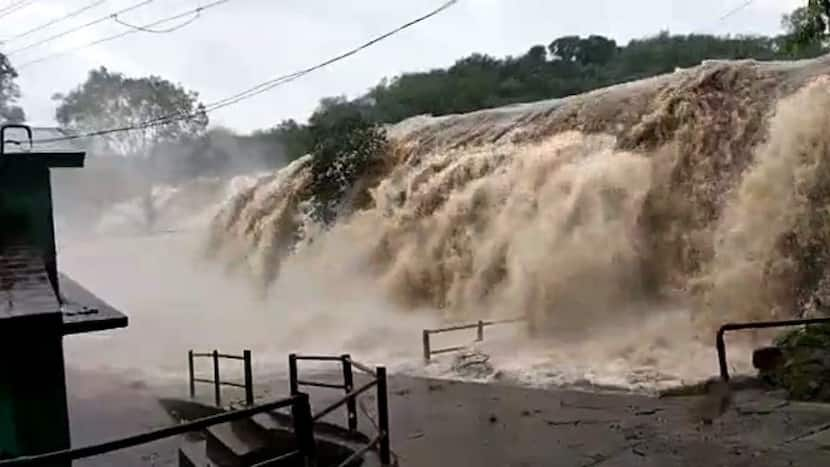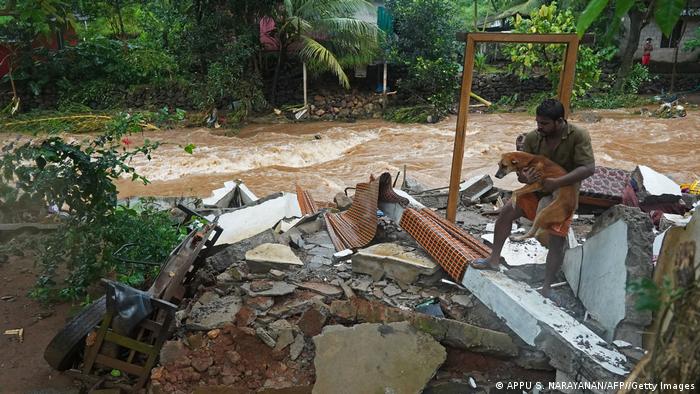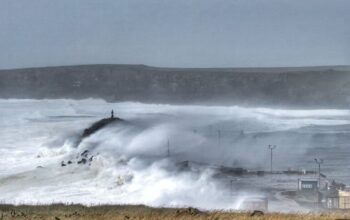Unbelievable videos and photos depict the devastation caused by the severe flooding and landslides in the Indian state of Kerala in south western India.

The following written content India TV
Several people have been injured and displaced in rain-related incidents in the southern state where dams in many districts are nearing its full capacity and small towns and villages in the hilly areas are totally cut off from the outside world.
Heavy rains pounding south and central Kerala causing flash floods and landslides in many parts have claimed many lives in the state, prompting the state government to seek the assistance of the defense forces for rescue operations.
In one of the heavy rains in recent years, the high ranges of central and south Kerala are experiencing almost similar to that of the situation the state faced during the time of devastating floods of 2018 and 2019 but authorities said everything was under control and there was no need for any panic.
Idukki district collector Sheeba George said rescue efforts were affected due to the subsequent landslips which happened in the area late in the evening. Four houses have been swept away due to the landslides. Mi-17 and Sarang Helicopters are already in standby mode to meet the requirements but they could not start operations as the weather at Kottayam is still bad. Read more from India TV
The following written content from NIE

Though the heavy rains which had been pounding central and southern Kerala for the past few days abated on Sunday, the government agencies, however, are still on high alert as the rain-related misery continues in various parts of the state. The death toll in the Koottickal landslide climbed to nine and the search has been progressing for two more people who went missing. Chief Minister Pinarayi Vijayan said as many as 105 relief camps were opened in the state after the rise in water levels in low-lying areas and the people should be ready to move relief camps in the light of more isolated rains predicted by the weather agencies. The state government has also made arrangements to open more camps in various parts of the state.
A weather bulletin issued by the Indian Meteorological Department (IMD) said the low-pressure area formed over southeast Arabian Sea and adjoining Kerala which brought incessant rains to Kerala for the past couple of days, has become less marked now. However, a trough of low at mean sea level lies over Southeast adjoining East central Arabian Sea off north Kerala-Karnataka coasts. As a result of this, there is a possibility for isolated heavy rainfall over Kerala during the next 24 hours. But the rain is expected to decrease thereafter, the bulletin said.
The IMD also issued yellow alert across the state except Wayanad, Kannur and Kasaragod on Sunday warning of isolated heavy rainfall. Around six teams of National Disaster Response Force have been deployed in Pathnamthitta, Alappuzha, Idukki, Ernakulam, Thrissur and Malappuram districts and five more teams would be deployed in Idukki, Kottayam, Kollam, Kannur and Palakkad districts, informed the office of the chief minister.
In addition, apart from the two teams of Indian Army deployed in Thiruvananthapuram and Kotayam and two teams of Defense Security Corps (DSC) in Kozhikode and Wayanad, a team of Engineers Task Force has moved to Mundakkayam from Bangalore and two choppers reached Thiruvananthapuram from Sulur near Coimbatore as part of disaster preparedness. The state has informed the Air force and the Navy to remain alert to tackle emergencies, the CMO informed.

The people trapped at Mallappally in Pathnamthitta is likely to be airlifted for which an air force chopper has been pressed while a chopper of Navy has been pressed in Kootickal and Kokkayar regions where landslide occurred on Saturday to distribute packed foods among the stranded people. The KSEB, Irrigation department and Motor Vehicle Department were told to remain alert and monitor the water levels in dams. Red alert has been declared in seven dams in the state including Kakki, Sholayar and Poringalkuthu. Read more from NIE




